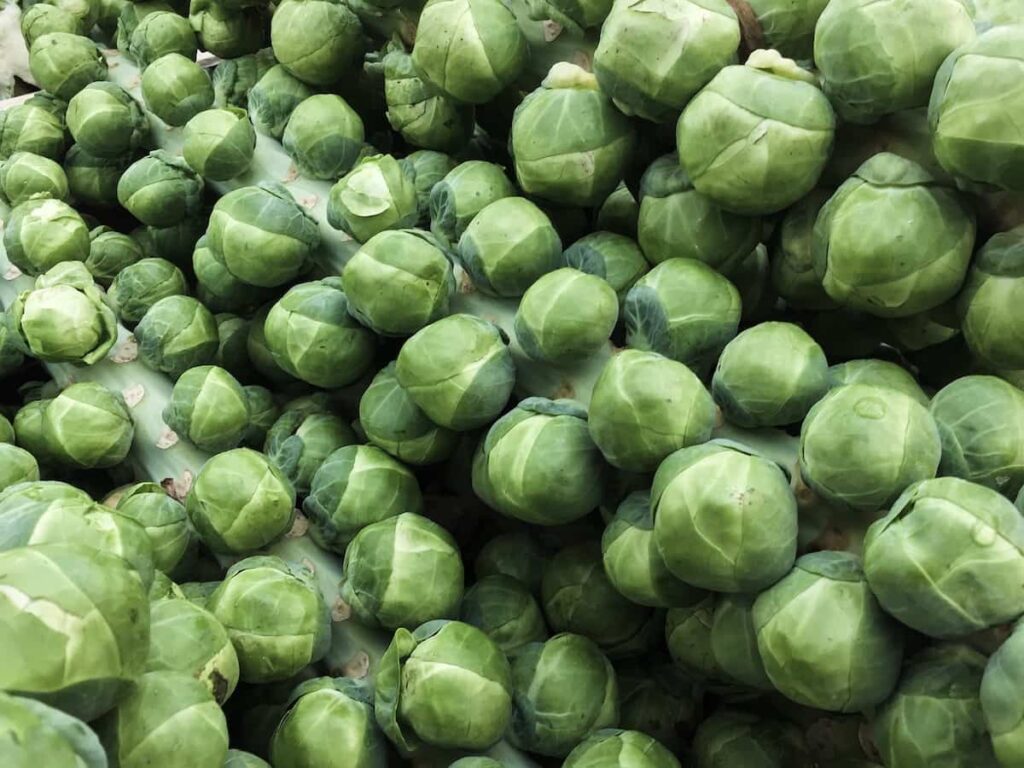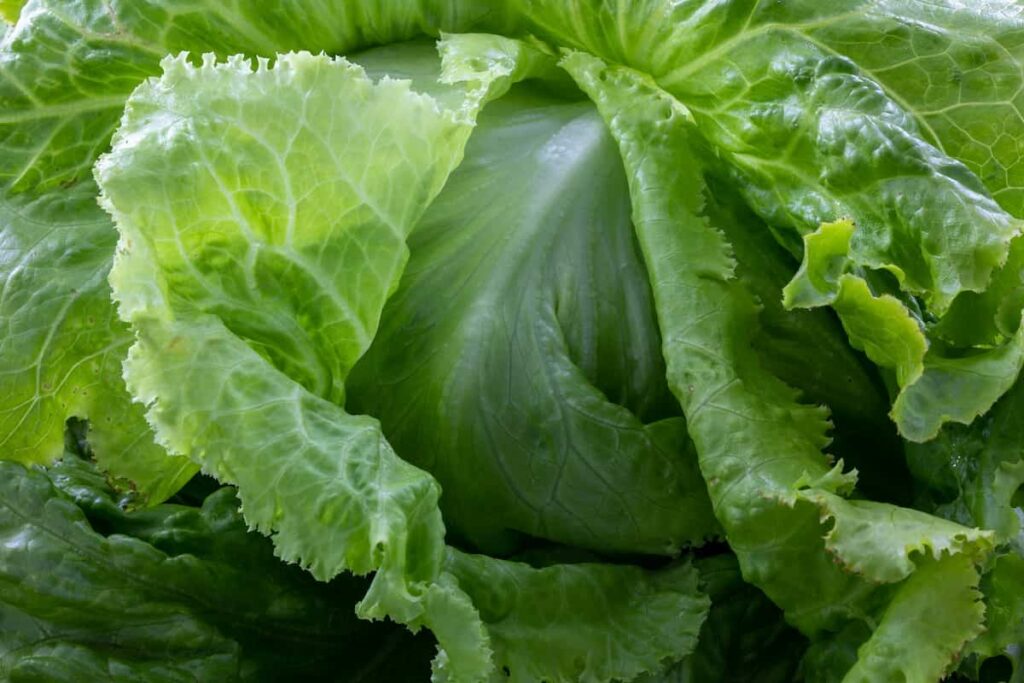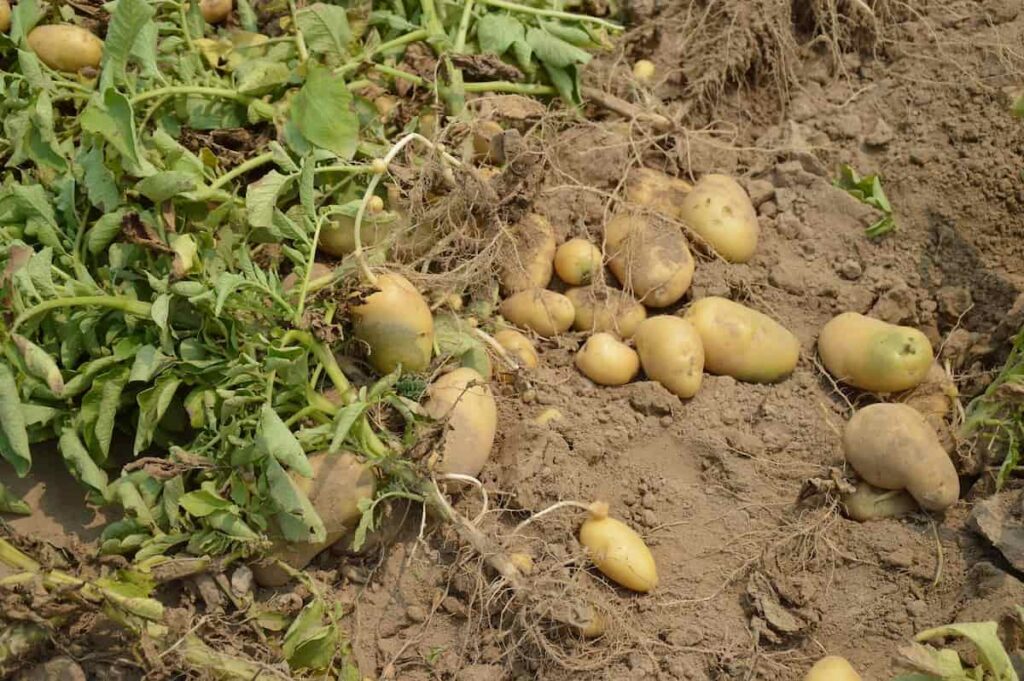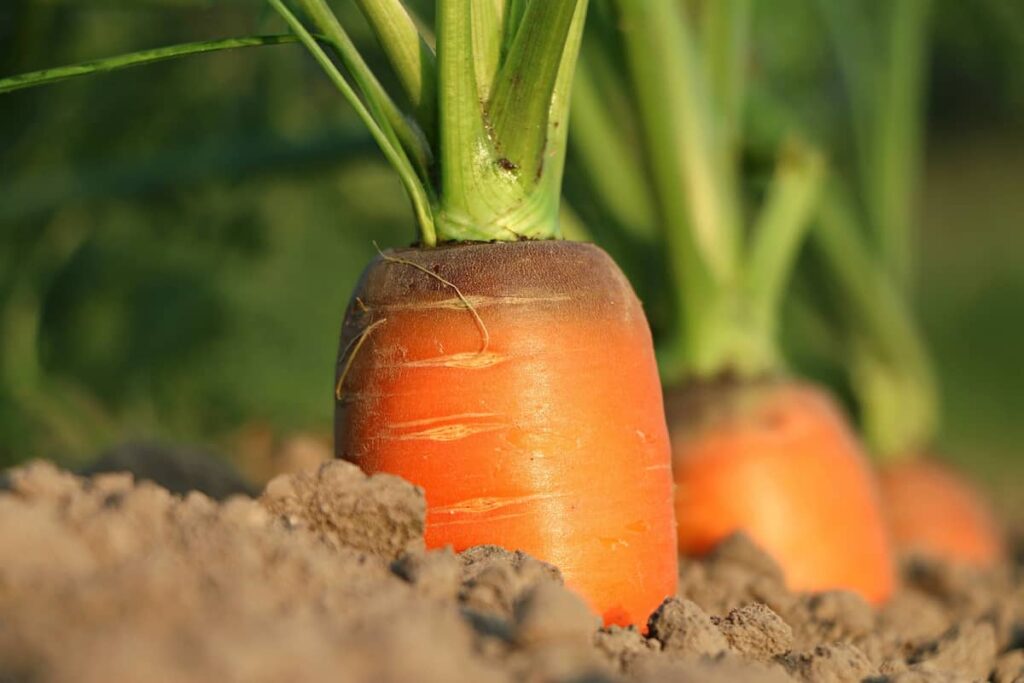Planting a garden can provide a family with many vegetables, which are both nutritious and free. Despite the effort required to keep a vegetable garden healthy, the time spent in nature positively affects everyone’s physical and mental well-being. Below we learn the North Dakota vegetable gardening planting calendar, North Dakota planting dates, month-by-month vegetable planting chart, and seasonal gardening guide for North Dakota and North Dakota gardening zones.

North Dakota (ND) vegetable planting calendar
When should I start my garden in North Dakota?
In the month of May, when your seedlings have grown a little, you can begin the process of hardening them off. This can be started on days warmer than the previous frost, but not earlier. If the soil is workable, you can start your radish seeds indoors and transplant them to the garden as early as this month. If you missed March, now is the time to plant the bulk of the seeds you started indoors in April.
Peas, dill, spinach, and carrots, among other cool-weather germinators, can be direct-seeded into the garden at any time this month, beginning around the 10th. Sweet potatoes, cucumbers, and seeds for winter squash should all be started indoors. At the end of the month, you should reseed barren spots, fertilize, and even aerate your grass. Start cutting your grass with the mower set to its greatest height.
After the snow melts, you can prune your grasses and watch as they send up fresh growth from the soil. Planting brassicas seedlings (broccoli, Brussels sprouts, cauliflower, cabbage, kale, kohlrabi, and Swiss chard) and salad greens (arugula, romaine, and arugula) can begin toward the end of April or the beginning of May. Be sure to clean all of your outside containers thoroughly before using them. You can begin planting new trees and bushes this year as soon as the danger of frost has passed.
What is the growing season in North Dakota?
The growing season in North Dakota is sometimes measured in terms of the duration between the last deadly frost/hard freeze of spring and the first hard freeze of fall. The number 32 degrees Fahrenheit quickly brings to mind images of bitter cold. Frost can form at temperatures as high as 38 degrees Fahrenheit in the presence of clear skies and light winds, whereas a hard freeze is defined as temperatures of 28 degrees Fahrenheit or lower. Now you know that the “growing season” can mean many different things to different people. On the other hand, North Dakota typically has a frost-free period of around 130 days.
In case you missed it: Croton Plant Care in India: Exclusive Tips for Beginners

What zone is ND for planting?
North Dakota’s continental climate gives it the warm-to-hot summers and cold winters. The state enjoys all four distinct seasons thanks to its location in the upper Midwest. A humid continental climate dominates the eastern part of North Dakota, while semiarid conditions exist in the western half. You can expect warm and humid summers and breezy, cold winters. Seasons are more extreme in the west, with warmer summers, milder winters, cooler winters, and warmer days in the east.
Average annual temperatures can range from the low 50s in January to the high 60s in July, depending on the plant. The North Dakota planting zones are very similar to one another. You can use an online map to find out what planting zone you are in. There are climate zones 3a and 4b in the state. Gardeners have relied on planting zones, called growth zones, to understand better which plants would thrive in a given region. Knowing your hardiness zone will help you select suitable plants.
Planting zones, on the other hand, help pinpoint when it is best to sow certain crops. Planting zones in North Dakota are based on the average dates of the first and last frosts. When planning your North Dakota garden, choose only plants that can survive in your specific planting zone or lower one. Zone 3a is the lowest possible growing zone; hence only plants hardy in zones 1-3 can be grown there. As a result, your plants have a better chance of surviving the winter in your zone.
Can you grow tomatoes in North Dakota?
The cultivation of determinate vines is simple. After the fruits are set, the vines die back, and the plants remain short and compact. The vines of a determinate type do not require pruning and can be trellised in cages without much effort. Use determinate vines for potted tomatoes. A frost will eventually kill an indeterminate vine, although it will continue to grow until it dies. They can reach a height of five feet or more. They require staking and trimming to flourish. A determinate or indeterminate variety can be indicated on the packaging.
Can you grow Brussels sprouts in North Dakota?
If you missed the window in March, now is the time to plant the bulk of the seeds you started indoors. Peas, spinach, dill, and carrots, among other cool-weather germinators, can be direct-seeded into the garden at any time this month, beginning around the 10th. Sweet potatoes, cucumbers, and even seeds for winter squash can all be started inside in advance.
In case you missed it: Lavender Farming in Jammu and Kashmir: Excellent Profits With Purple Revolution Under Aroma Mission

When should I plant seeds in North Dakota?
You should start by reading the instructions on the seed packets. Often, you’ll find instructions like “start seeds indoor 4 to 6 weeks prior to the last frost” on seed packets. It well knows that the latest frost date in North Dakota is often in the latter two weeks of May.
How late can you plant a garden in North Dakota?
Select hardy vegetable seeds in chilly conditions if you are struck with spring fever while the soil is still cold. Prevent working the soil before it’s ready. When heavy clay soils are worked while wet, they become compact. The southern regions of North Dakota have opportunities to grow frost-resistant veggies during the last week of April.
Examples are asparagus, onions, cabbage, peas, radishes, rhubarb, spinach, and wilted rhubarb. The optimal time to sow half-hardy veggies is between May 10 and 20. These consist of such foods as cauliflower, lettuce, beets, carrots, parsnips, potatoes, and chard. After May 20th, you can grow tomatoes, peppers, sweet corn, squash, and other tender crops.
When to plant onions in North Dakota?
What kind of fertilizer your plants require can be determined by doing a soil test. Before planting, one basic rule of thumb is to spread 1/2 cup of 10-20-10 per 10 feet of row. In the spring or summer, you can apply urea (46-0-0) as a side dressing at a third of a cup for every 10 feet of row. Late summer fertilization results in thick stalks with poor storage properties and should be avoided. Big onions only grow in direct sunlight.
Onions will benefit significantly from prolonged exposure to light, as this is their primary energy source. In late April, when small frosts are still possible, onions are often planted in the ground outside. Planting giant bulbs requires a large area. As a result of being squished, bulbs will not develop to their full potential. Rows should be 12–18 inches apart, and plants should be placed 4–6 inches apart. Double or several rows in a single bed are perfectly acceptable for planting.
Plants should be spaced 2 inches apart in the row and thinned as needed if green onions are to be harvested while still young. Watering is essential for giant bulbs. Onions can’t thrive in dry soil because their roots are so shallow. One inch of water each week, whether from watering or natural rainfall, is ideal for planting. While the bulb is developing, the plant’s access to water is crucial. At this point, some gardeners recommend watering the plant material by 1.5 inches every week.
In case you missed it: Vertical Strawberry Farming: A New Way to Increase Your Income and Yield

When to plant tomatoes in North Dakota?
You may have already figured this out, but throughout the spring, you need to pay extra attention to the weather in your area. Check the last frost timing. You can safely plant tomatoes outside North Dakota once two weeks have passed since the last frost.
When to plant potatoes in North Dakota?
Two weeks before the average final frost, potatoes can be planted. At least 45 degrees Fahrenheit should be present in the soil. Planting potatoes is easy, and they thrive in a wide variety of soils, although they do particularly well in well-drained, sandy loams. It’s recommended to pre-irrigate the soil to create a moist seed bed and tills it to a depth of 16 inches.
You should leave 30–36 inches between each row while planting potatoes. Plant the seed pieces about 10-12 inches apart in the row and no more than 4 inches deep. Hills can be made at the time of planting or anytime in the next four weeks. Hilling creates more room for expanding tubers and reduces the likelihood of them becoming green.
What can I plant now in North Dakota?
Spring vegetable planting in ND
It’s recommended to clean and sharpen your gardening tools in March. Then, oil them to keep them from rusting and to make them easier to move. It’s time to prune the trees that will bloom this summer. Some seeds, such as rosemary, celery, peppers, eggplant, thyme, and oregano, may require to be started around the middle of March. Basil, broccoli, cabbage, cauliflower, brussels sprouts, sage, kale, and tomatoes can all be planted at the end of the month.
At the end of the month, it’s a good idea to bring out the lawnmower and give it a thorough maintenance check, including an oil change, spark plug replacement (if necessary), blade cleaning and sharpening, and removal of clogged grass from underneath the deck. In the month of May, when your seedlings have grown a little, you can begin the process of hardening them off. This can be started on days warmer than the previous frost, but not earlier.
If the soil is workable, you can start your radish seeds indoors and transplant them to the garden as early as this month. If you missed March, now is the time to plant the bulk of the seeds you started indoors. Peas, dill, spinach, and carrots, among other cool-weather germinators, can be direct-seeded into the garden at any time this month, beginning around the 10th. Sweet potatoes, cucumbers, and seeds for winter squash should all be started indoors. At the end of the month, you should reseed barren spots, fertilize, and even aerate your grass.
After the snow melts, you can prune your grasses and watch as they send up fresh growth from the soil. Planting brassicas seedlings (broccoli, Brussels sprouts, kale, kohlrabi, cabbage, cauliflower, and Swiss chard) and salad greens (arugula, romaine, and arugula) can begin toward the end of April or the beginning of May. Be sure to clean all of your outside containers thoroughly before using them. You can begin planting new trees and bushes this year as soon as the danger of frost has passed.
Parsnips, potatoes, beets, cilantro, maize, and beans are just a few of the many more vegetables that can be straight-seeded into the garden now. Don’t put off weeding until next year; start now. If you can go in there and snip them off often enough while they’re still young, you’ll have fewer weeds to pull later in the summer. In May, you can put lettuce, tomatoes, basil, sage, celery, thyme, oregano, and pepper seedlings in the ground.
In case you missed it: How to Grow Desert Roses: Varieties, Soil, Planting, Pruning, Fertilizers, and Care

Fall vegetable planting in ND
If you have any sensitive plants or herbs you’d like to bring inside for the winter, now is the time to start making a move. Before the cold of winter comes in plant some fresh trees or bushes and water them regularly. Get moving on your final harvest and canning tasks for the season. Prepare your plants for frost by covering them or bringing them inside before the 20th of September.
In October, collect and compost all of your dead vegetable plants. Whether you plan to use them as mulch or compost, leaves must be raked up, chopped up, disposed of, or added to your garden soil. It’s time to aerate, oversee, and fertilize your lawn. Adding more mulch is a good idea.
Wrap young trees and bushes in burlap and give them a good soaking. Wrapping the tree trunks in protective material prevents injury to the trees. Take care of your home’s gutters by cleaning them. Garden tools that are unclean, worn, or broken should be cleaned, repaired, sharpened, or replaced in November. Enjoy your indoor plants and plan some exciting landscaping or gardening activities for the off-season.
Summer vegetable planting in ND
Keep up the weeding in June. Get in the habit of deadheading. Seed the ground with eggplant, sweet potatoes, cucumbers, and squashes. Be sure to plant your direct-seed vegetables as soon as possible in June if you missed the window at the end of May. Plant okra seeds outside in June. Beets, carrots, kale, broccoli, lettuce, and spinach are among the vegetables that can yield a second harvest if planted at the beginning of July. To avoid blossom end rot in your tomatoes, be diligent about providing the proper care, including feeding and watering.
Winter vegetable planting in ND
It’s not too early to start planning the seeds you’ll want to plant inside in the coming months. Have fun with all the houseplants. In preparation for the next year’s intense growing season, take advantage of any downtime. Prepare your seed-starting supplies in advance of the garden planting schedule by washing trays and containers, checking your grow lights’ functionality, and planning where you will place them. Check what you already have and determine if you’re missing anything that would require additional seed.
In case you missed it: How to Grow African Violets: A Guide to Propagation, Planting, and Care

Planting plans for the upcoming gardening season can be made in February if you are a forward-thinking person. Now can be the perfect time to try out companion planting if you have yet to do so previously. Get your seed packets in order, and plan when you’ll be planting the various seeds this year. The final frost date often falls around May 10th, so you can use that as a starting point for planning your planting schedule.
North Dakota vegetable planting calendar/guide/chart/schedule
| Vegetables | Zone 3 | Zone 4 |
| Snap Beans | Mid-June to Mid-Sep | June to Mid-Sep |
| Lima beans | Mid-May to Mid-June | May |
| Beets | Mid-May to Mid-Sep | Mid-Apr to Jun, ly to Sep |
| Broccoli | Mid-May to Sep | Apr to June, July to Mid-Aug |
| Brussel Sprouts | Mid-May to Mid-Oct | Mid-Apr to Mid-Oct |
| Cabbage | Mid-May to Mid-Sep | May to Mid-Oct |
| Carrots | Mid-June to Mid-Sep | Mid-Apr to June, Mid-July to Sep |
| Cauliflowers | Mid-May to Sep | May to Sep |
| Corn | – | June to Mid-Sep |
| Cucumber | Mid-June to Mid-Sep | June to Mid-Sep |
| Kale | May to Sep | Mid-Apr to June, Mid-July to Mid-Oct |
| Lettuce | Mid-May to Sep | May to June, Mid-July to Sep |
| Onions | – | Mid-Apr to Mid-Sep |
| Peas | Mid-May to Mid-Sep | Mid-Apr to June |
| Peppers | Mid-Apr to Aug | Mid-Apr to Mid-Sep |
| Spinach | May to Sep | Mid-Apr to June, Mid-July to Mid-Oct |
| Summer Squash | – | June to Mid-Sep |
| Tomato | Mid-Apr to Aug | Mid-Apr to Mid-Sep |
| Asparagus | Mid-Apr to May | Mid-Apr to May |
| Artichokes | – | – |
| Celery | Mid-May | Mid-May |
| Chard | Early May | Early May |
| Chives | – | – |
| Eggplants | Early June | Early June |
| Kohlrabi | Mid-Apr to Mid-Aug | Mid-Apr to Mid-Aug |
| Okra | Early June | Early June |
| Potatoes | Mid-Apr to June | Mid-Apr to June |
| Radish | Apr to June, Aug | Apr to June |
| Winter squash | May to June | May to June |
Conclusion
One of the best ways to keep at gardening is to see progress. Growing a garden can be much fun, and when the first fruits appear, you know you won’t have to wait long to eat some fresh, healthy vegetables that you grew yourself. If you live in the following towns or cities, or counties and plan to grow vegetables, this North Dakota vegetable planting calendar chart will help you with setting up your garden.
| Bismarck | Valley City |
| Fargo | New Town |
| Minot | Oakes |
| Grand Forks | Hazen |
| Watford City | Casselton |
| Williston | Central North Dakota |
| Dickinson | Eastern North Dakota |
| Devils Lake | Southern North Dakota |
| Mandan | Northern North Dakota |
| West Fargo | Western North Dakota |
| Wahpeton |
- Crops Grown in Summer Season: Best Choices for Summer Gardening
- Organic Pest Control for Tomato Farming
- How to Maximize Sheep Farming Profit
- Broccoli Varieties: Choosing the Right Cultivars for Your Farm
- How to Raise Pigs in Your Own Backyard: A Comprehensive Guide
- Budget Friendly Sheep Shed Ideas: Cheap and Low-Cost Tips
- How Much Do Cattle Farmers Make: Revenue Streams in Cattle Farming
- Management Pests and Diseases in Your Cotton Field
- Sheep Farming Business Plan for Beginners
- Aquaponic Farming at Home: A Step-By-Step Guide
- Profitable Village Farming Business Ideas in 2024
- High-Yield Aquaculture: Fast-Growing Fish for Farming
- Effective Fish Pond Construction Techniques for Beginners
- Irrigation and Water Management in Pineapple Farming
- Blossom to Harvest: Mastering Flowering and Pollination in Papaya Farming
- Pig Fattening Essentials: From Selection to Sale for Beginners
- Raising Wagyu Cattle: A Complete Guide for Premium Beef Production
- Soil Types and Their Water Holding Capacity
- Optimizing Irrigation Schedules for Coconut Groves for Enhanced Yield
- Espresso Your Garden: Coffee Grounds for Healthier Acid-Loving Plants
- The Best Soil Mix for Snake Plants: How to Mix Your Own Snake Plant Soil
- Green Thumb Success: Expert Tips for Cultivating Greenhouse Beans All Year Round
- Bloom All Year Round: The Ultimate Guide to Indoor Hyacinth Care
- Eco-Friendly Gardening: How to Make Liquid Fertilizer from Kitchen Waste
- Ultimate Guide to Grow Anise in Pots: Explore Seed Propagation to Harvesting
- Guide to Raising Chester White Pigs: Discover Breed Facts to Growth Management
- Mastering the Elegance: The Ultimate Guide to Weeping Cherry Tree Care, Planting, and Maintenance
- Ultimate Guide to Planting Garlic in Grow Bags: Growing Strategies for Beginners
- How to Fix Spider Plant Leaf-Related Problems: Natural and Organic Remedies
- 10 Reasons Why Your Tulsi Plant is Shedding Leaves: Home Remedies and Solutions
- Optimizing Growth and Yield: The Advantages of Palm Bunch Ash Fertilizer
- Utilizing Neem Oil Extract as a Natural Pesticide for Hydrangea
- From Soil to Harvest: Various Ways in Which Farmers Can Use AI Tools
- Steps to Encourage and Induce Citrus Flowers: A Comprehensive Guide
- How to Fix Snake Plant Leaf-Related Issues: Natural and Organic Remedies
- Transform Your Garden into a Fragrant Oasis with Raat Ki Rani (Night Blooming Jasmine)
